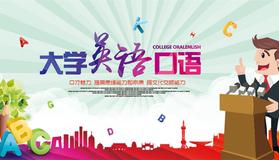-
1 扩展阅读
-
2 章节测验
The Statue of Liberty
The Statue of Liberty is one of the most recognized symbols of American freedom. Standing on Liberty Island in the middle of the Hudson River in New York Harbor, the Statue of Liberty was given to the U. S. by the French in 1886. The French gave the Statue of Liberty, or Statue de la Liberté, to the United States as a token of friendship.
The Statue of Liberty has greeted immigrants coming into the U. S. since that time. Alexandre Gustave Eiffel, creator of the Eiffel Tower, designed the interior structure, while Frederic Auguste Bartholdi was the sculptor. Made of copper, the statue depicts Lady Liberty standing tall with the torch of freedom raised with her right arm. Her left hand holds a stone tablet close to her. The tablet contains the date July 4, 1776, which acknowledges and commemorates the American Declaration of Independence.
The Statue of Liberty is 151 feet tall and is made from pure copper on a steel framework. Lady Liberty’s thorny crown has seven points representing the seven seas. The torch represents a burning passion for freedom and contains a flame that is coated in gold leaf. The broken shackles at the base of Lady Liberty’s feet represent freedom from oppression.
The Statue of Liberty is one of the first glimpses that most immigrants throughout history have gotten of America when migrating through the famed and nearby Ellis Island. Some people have reported over the years that the Statue of Liberty is smaller than originally thought, just as many have also reported that she is actually larger than anticipated. Like a buildup to an acclaimed movie, sometimes expectations are high and it’s hard for any one thing to live up to the buildup. Since 1886, the Statue of Liberty has received a new torch. The old torch received many modifications and repairs over the years in order to keep it solid and sound. However, in 1916 there were extensive modifications and the torch was eventually deemed to be beyond further repair. So, the original torch with gold leaf was moved inside the Statue of Liberty to the monument’s museum. The new torch also has gold plating applied and includes a climate control system and elevators as well. The new torch was reopening to the public in 1986.
The Statue of Liberty remains an enduring symbol of American freedom that people from the U.S. and abroad feel compelled to visit. As one of the most symbolic gestures of all time, the Statue of Liberty represents freedom, liberty, justice and also the friendship of foreign nations who also believe in freedom and fair and equal treatment for all.


